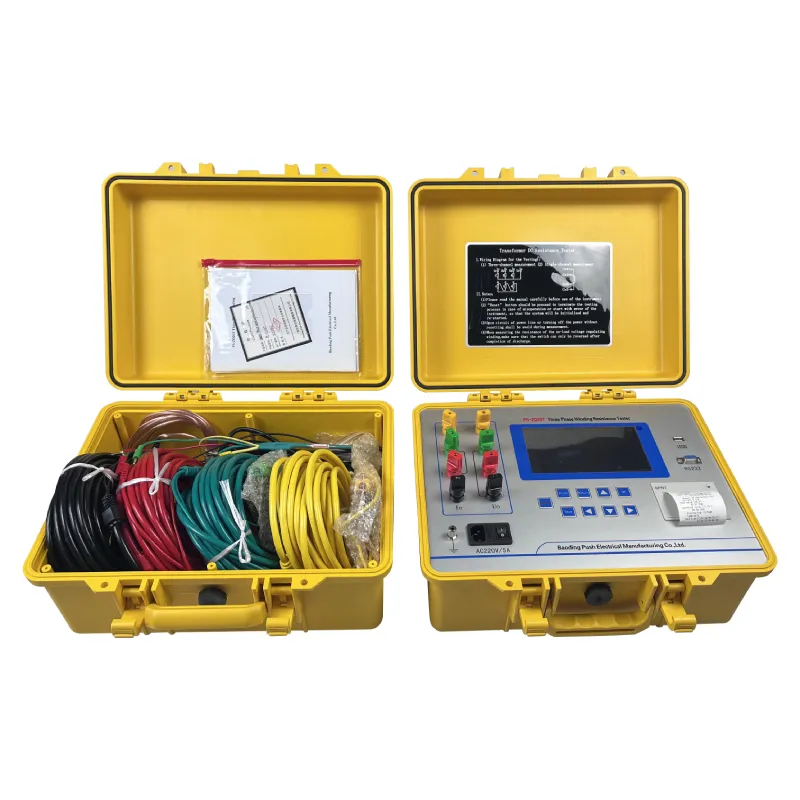 English
English


Testing and Evaluation of Transformer Relay Performance in Power Systems
Understanding Transformer Relay Testing
Transformer relay testing is a critical aspect of maintaining the reliability and safety of electrical power systems. As transformers are essential components in the transmission and distribution of electrical energy, it is crucial to ensure they are protected efficiently against faults or unexpected conditions. This is where relay testing comes into play, allowing professionals to verify that protective relays function properly.
The Importance of Transformer Relay Testing
Transformers are designed to transform electrical energy from one voltage level to another while maintaining power quality and efficiency. However, they can also be susceptible to various faults such as short circuits, overloads, and insulation failures. When these faults occur, protective relays are responsible for detecting the problems and initiating the appropriate response to isolate the faulty equipment from the system.
Testing these relays ensures that they can accurately detect abnormalities and operate correctly in real-life scenarios. A failure of a relay to operate in time can lead to catastrophic failures, including transformer damage, fire hazards, and significant downtime in power supply.
The Testing Process
The transformer relay testing process involves several steps
1. Preparation Before testing, it is essential to gather the necessary documentation, including relay specifications, operating manuals, and protection settings. Knowledge of the transformer’s characteristics and its operational environment contributes significantly to a successful testing procedure.
transformer relay testing

2. Visual Inspection Conduct a thorough visual inspection of the relay and associated wiring. Look for signs of physical damage, corrosion, or loose connections, which can all affect the performance of the relay.
3. Testing Equipment Setup The testing process typically requires specialized equipment, such as relay testers, multifunction testers, and oscilloscopes. Ensure that these devices are calibrated and functioning correctly before commencing the tests.
4. Functional Testing This involves simulating fault conditions to verify the relay's response. Various tests can be executed, including - Current Injection Tests Involve injecting specific current levels into the relay to test its operation against predefined settings. - Voltage Injection Tests Similar to current tests, these assess the relay's response under voltage conditions. - Timing Tests Measure the time taken by the relay to operate once a fault condition is detected, ensuring it falls within the expected parameters.
5. Analysis and Evaluation After conducting all tests, the results must be analyzed against the acceptable standards or manufacturer’s specifications. Any discrepancies need to be documented and evaluated, and corrective actions should be taken if necessary.
6. Documentation Finally, comprehensive documentation of the testing process and results is crucial. This provides a historical record for maintenance and operational audits, contributing to future reliability assessments.
Conclusion
Transformer relay testing is not merely a routine task; it is a fundamental practice that ensures the integrity and reliability of the electrical power systems, protecting both equipment and personnel. Regular testing can identify potential issues before they escalate into severe problems, thereby enhancing the lifespan of transformers and optimizing operational efficiency. As the demand for electricity continues to grow, the importance of effective transformer relay testing cannot be overstated. By adhering to stringent testing protocols and leveraging advances in technology, utility companies and maintenance teams can safeguard essential infrastructure and ensure a stable electricity supply for all.
-
Differences between open cup flash point tester and closed cup flash point testerNewsOct.31,2024
-
The Reliable Load Tap ChangerNewsOct.23,2024
-
The Essential Guide to Hipot TestersNewsOct.23,2024
-
The Digital Insulation TesterNewsOct.23,2024
-
The Best Earth Loop Impedance Tester for SaleNewsOct.23,2024
-
Tan Delta Tester--The Essential Tool for Electrical Insulation TestingNewsOct.23,2024





